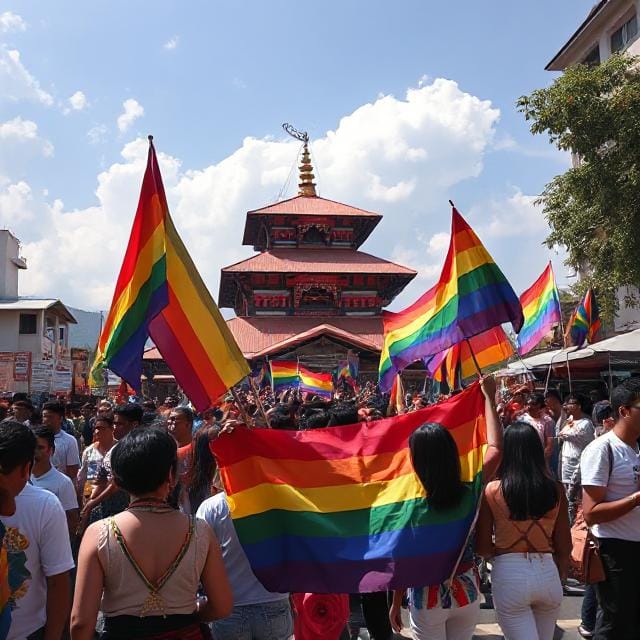When “Other” Isn’t Enough: Rethinking Identity in National Data

One moment in particular has stayed with me from my time working as part of the Computer-Assisted Telephone Interviewing (CATI) team for the Evidence to Action: Addressing Violence Against LGBTIQ+ People in Nepal project. Our team at Togglecorp was engaged by VIAMO to support this important initiative through data supervision, enumeration, and analysis, as part of a broader effort led by UN Women, M&C Saatchi World Services, Blue Diamond Society, VIAMO, and the Government of Finland. (Full Report)
It was during a call with a young person from Kailali District, nestled deep in the culturally conservative folds of Far-Western Nepal. I asked, “What gender role do you identify with? ” was followed by a long, loaded silence.
It gave me the sense that this hesitation was not just about confusion, but the combined weight of spending many years feeling unseen, unheard. They did not quite fit into the label “other,” but neither did they feel recognized by their birth identity, one that had been imposed further by their family. To me, that pause told me more than any survey possible could. It revealed just how confining “categories” are—and how deep and painful the longing must be to feel recognized and seen for who they truly are.
And yet, the ground reality told a different story.
An unprecedented event started to make news as Nepal’s Central Bureau of Statistics (CBS) began preparations for its 2021 census. The government’s statistics authority began to engage in meaningful dialogue with LGBTIQ+ rights groups, including Ms. Sarita KC, Executive Director of Mitini Nepal.
During the discussions, concerns were raised about the term “third gender,” which many felt carried negative connotations and was often linked to sex work. “We wanted a more neutral term,” said Sarita. After thoughtful consultation, the term “other” was recommended as a more inclusive and respectful alternative.(UN Women)
The result - in the 2021 census, the household listing included three sex categories instead of the standard two that it had been practicing since its first census carried out in 1952 - ‘male’, ‘female’, and ‘other’. It was a move shaped by community advocacy and the push for dignified representation.(UN Women)
While reading about these groundbreaking changes in the census, I reflected again on my experience from the Evidence to Action project. That initiative offered more than numbers. It brought to light the rich, complex human experiences of 1000+ individuals from across the country stories that statistics alone could never truly capture.
But the ground story told a different story.
Yet despite these strides, the exact size of Nepal's LGBTIQ+ population remains unknown. According to the 2021 national census, approximately 2,928 individuals identified as lesbian, gay, bisexual, transgender, intersex, or having other diverse sexual or gender identities. However, the absence of specific questions and inclusive data collection methods combined with fear, stigma, and privacy concerns, likely led to significant under-reporting. In contrast, LGBTIQ+ advocacy groups estimate the real figure could be around 2.5 million individuals across Nepal. (National Library of Medicine)
But why is there such a vast gap? Bhumika Shrestha, a program manager at Blue Diamond Society (Republica) says one reason can be that the “sexual and gender minorities cannot reveal their identities as their family members do not allow it to happen, so our population is under-reported.”
Similarly, activist Rukshana Kapali argued that the government's use of the ‘new’ sex category - “other” - was deeply problematic itself. “The category is as stupid as asking someone: are you a male, female, or Newar?”, she challenged on social media, highlighting how reducing complex identities to a mere checkbox was itself an act of exclusion (The Record Nepal).
Back in 2020, Mitini Nepal’s Sarita KC said that there were plans for a more specific, detailed survey exclusively for the LGBTIQ+ community, hopefully by 2022, adding that it would provide more accurate data. (Jurist News).
But in 2025, it still hasn’t happened.
That moment of silence from Kailali reminded me of something I’ve come to understand deeply through my work on the ground, being seen and heard isn’t about being part of a dataset not even close.
It’s about the courage to speak your truth, in a space where you feel safe, unjudged, and unafraid. It’s about being counted in a way that feels real, not reduced to a checkbox. Because true recognition isn’t a technical exercise; it’s a human conversation, one that must welcome every identity, every voice, and every lived experience.

